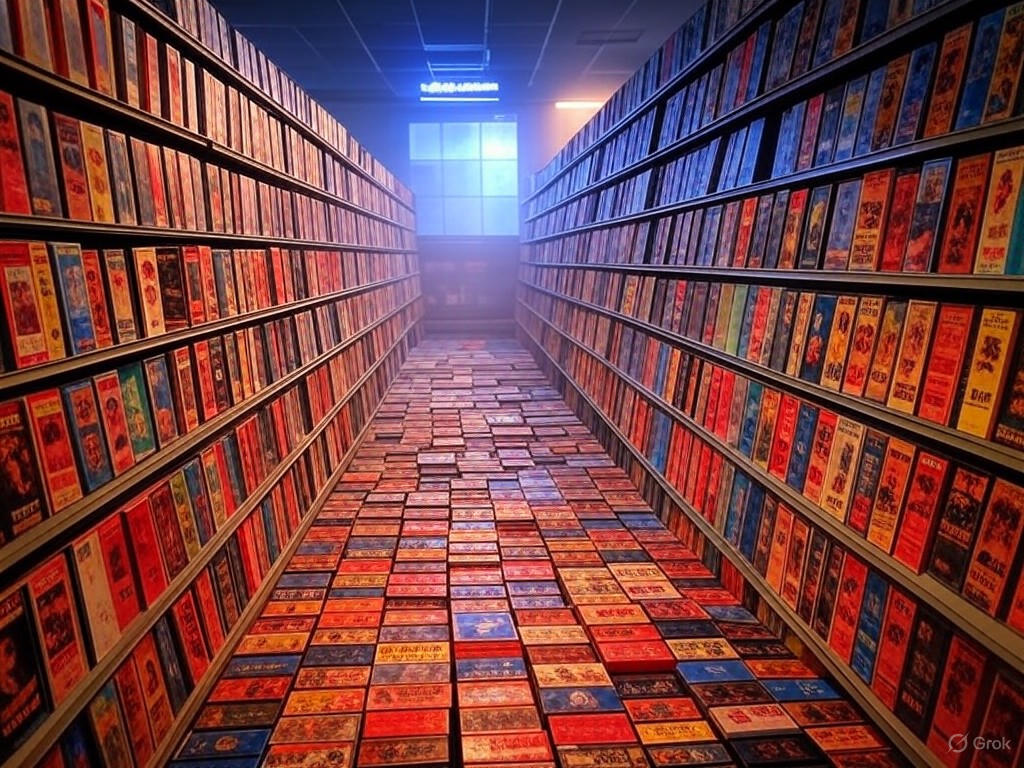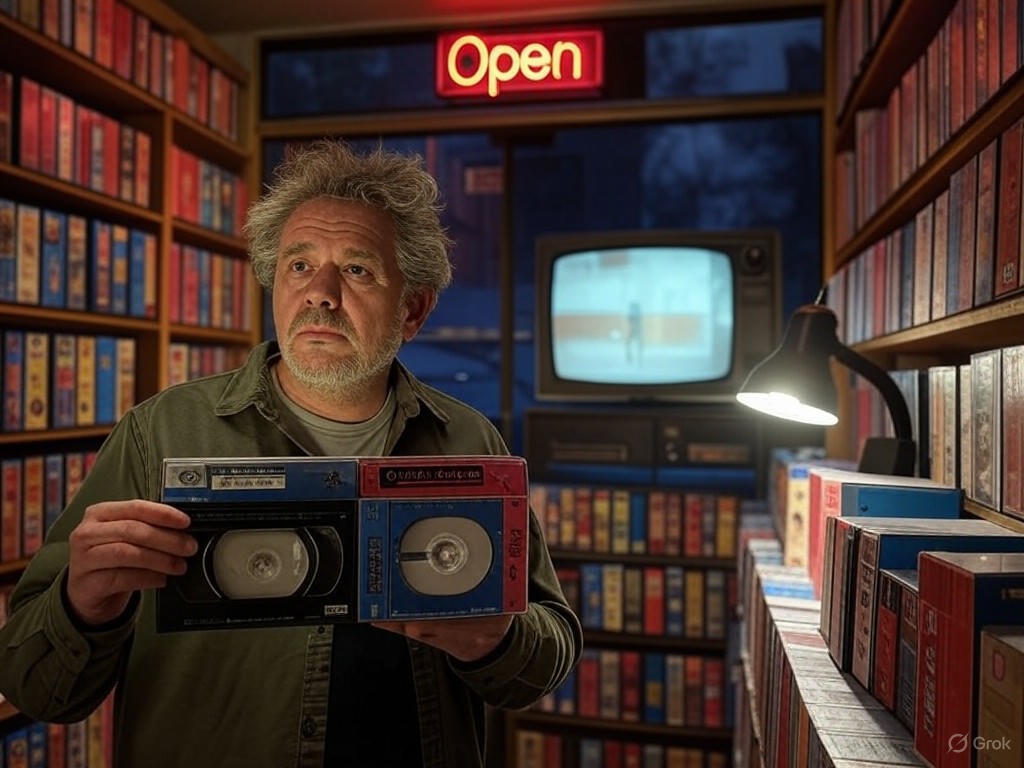Video Stores in Film: Hollywood’s Nostalgic Turn
In an era where the flicker of a screen is more likely to come from a pocket-sized device than a family living room projector, there's a quiet rebellion brewing in the dim aisles of video stores. Remind you of anything? Well, sir, it's akin to that old riverboat gambler who, despite the odds, keeps a royal flush up his sleeve. Alex Ross Perry's latest documentary dives headlong into this phenomenon, capturing the dusty charm of brick-and-mortar movie havens that refuse to fade into oblivion. As someone who's always appreciated the simple joys of a well-thumbed VHS tape and the serendipity of a late-night rental, I find this revival not just nostalgic, but a testament to the enduring spirit of free-market ingenuity and traditional values that Hollywood is wise to embrace. Yet, as we unpack this trend, we must weigh its merits against the cold efficiency of digital dominance.
The Nostalgic Wave Sweeping Movie Culture
Picture this: a neon sign buzzing in the night, rows of colorful boxes promising escapades from the mundane, and the satisfying clunk of a cassette sliding into a player. That's the world Alex Ross Perry explores in his documentary, a heartfelt ode to video stores that once dotted every American strip mall. Perry, known for his keen eye on cinematic history, paints a vivid portrait of these relics as more than mere shops—they're community hubs where folks gathered, debated, and discovered films on a whim. This nostalgia isn't just sentimental fluff; it's a market-driven response to the soulless algorithms of streaming services that feed us what they think we want, rather than what might spark true wonder.
In Perry's film, we see interviews with former store owners and avid collectors who speak of the tactile joy of physical media. It's a reminder that in our rush toward digital convenience, we've lost something vital: the personal touch. According to a recent analysis by The Wall Street Journal, sales of physical media like DVDs and Blu-rays have seen a modest uptick, particularly among millennials and Gen Z, defying predictions of their demise. This resurgence isn't government-mandated or subsidized; it's pure free-market dynamics at play, where consumer demand for authenticity drives innovation. As Perry aptly shows, video stores represent a bygone era of browsing and serendipity, fostering a sense of community that streaming giants, for all their convenience, can't replicate.

An evocative scene from a bustling video store in the 1990s, highlighting the communal browsing experience that Perry's documentary celebrates.
Hollywood's Role in Reviving Physical Media
Hollywood, ever the opportunist, has latched onto this wave of nostalgia, turning it into a profitable venture. Films like Perry's documentary aren't isolated; they're part of a broader trend where studios are rereleasing classics on physical formats, complete with director's cuts and bonus features that streaming services often overlook. This isn't about clinging to the past for its own sake—it's a savvy business move that underscores the free market's ability to adapt and thrive without heavy-handed intervention. Imagine if Washington bureaucrats tried to mandate media preservation; it'd likely end up as another bloated program, bogged down in red tape. Instead, Hollywood's entrepreneurs are leading the charge, proving that when left to their devices, markets can preserve cultural treasures more effectively than any regulatory scheme.
Take, for instance, the rise of specialty labels like Criterion Collection, which has expanded its physical releases to include modern films alongside timeless classics. As reported by IndieWire, these efforts have not only boosted sales but also reignited interest in film curation, a nod to traditional values of craftsmanship and storytelling. Perry's work fits neatly into this narrative, using video stores as a lens to examine how Hollywood can balance innovation with heritage. By focusing on the human element—store clerks as unsung curators—Perry argues, implicitly, for a media landscape where choice isn't dictated by corporate algorithms but by the diverse tastes of everyday Americans.
Yet, we must acknowledge the challenges. Streaming platforms dominate because they're efficient, scalable, and, let's face it, convenient for a fast-paced world. A Variety article highlights how digital subscriptions have outpaced physical sales by a wide margin, raising questions about the long-term viability of video stores. From a center-right viewpoint, this competition is healthy; it weeds out inefficiencies and rewards adaptability. Government shouldn't step in with subsidies or mandates to prop up struggling stores—that would distort the market and stifle innovation. Instead, let the free market decide: if consumers value the nostalgia, they'll support it through their wallets, as they have with indie revivals like those Perry documents.
Evidence of a Cultural Shift
The evidence for this nostalgic revival is as plain as the nose on your face, backed by data and real-world examples. Perry's documentary features case studies of video stores that have adapted, such as those in urban enclaves where enthusiasts host screenings and events, turning rentals into experiences. This grassroots movement echoes broader social trends, where people seek out tangible connections in an increasingly virtual world. A study from The Hollywood Reporter reveals that while overall physical media sales dipped in the 2010s, niche markets have grown by 15% in the last five years, driven by collectors and families who cherish the ritual of movie nights.
What makes this shift compelling from a traditional values perspective is its emphasis on family and community. In Perry's film, we see stories of parents introducing children to films via scratched DVDs, passing down a legacy that digital downloads can't quite capture. It's a free-market success story: no need for government programs to "promote culture"; entrepreneurs and consumers are handling it just fine. Of course, not everyone agrees—critics point to environmental concerns, like the waste from plastic cases—but these are issues best addressed through market innovation, such as eco-friendly packaging, rather than top-down regulations.

A poignant frame from Perry's documentary, showing a patron lost in the aisles of a video store, symbolizing the enduring appeal of physical media exploration.
Looking Ahead: Preserving Tradition in a Digital World
As we wrap up this yarn, it's clear that Alex Ross Perry's documentary isn't just a trip down memory lane—it's a call to arms for preserving the soul of movie culture. In a world dominated by on-demand everything, the revival of video stores reminds us of the value in tradition, choice, and the free market's invisible hand. Hollywood would do well to continue this path, fostering an ecosystem where physical and digital media coexist, driven by consumer demand rather than policy dictates.
Ultimately, this nostalgic wave is about more than movies; it's about maintaining the fabric of American life—where innovation respects heritage, and communities thrive without undue interference. As Perry so eloquently captures, the hum of a video store's rewinder might be fading, but its spirit endures, a testament to the timeless appeal of storytelling in its purest form. Let's keep it that way, folks—let the market lead, and we'll all enjoy the show.

